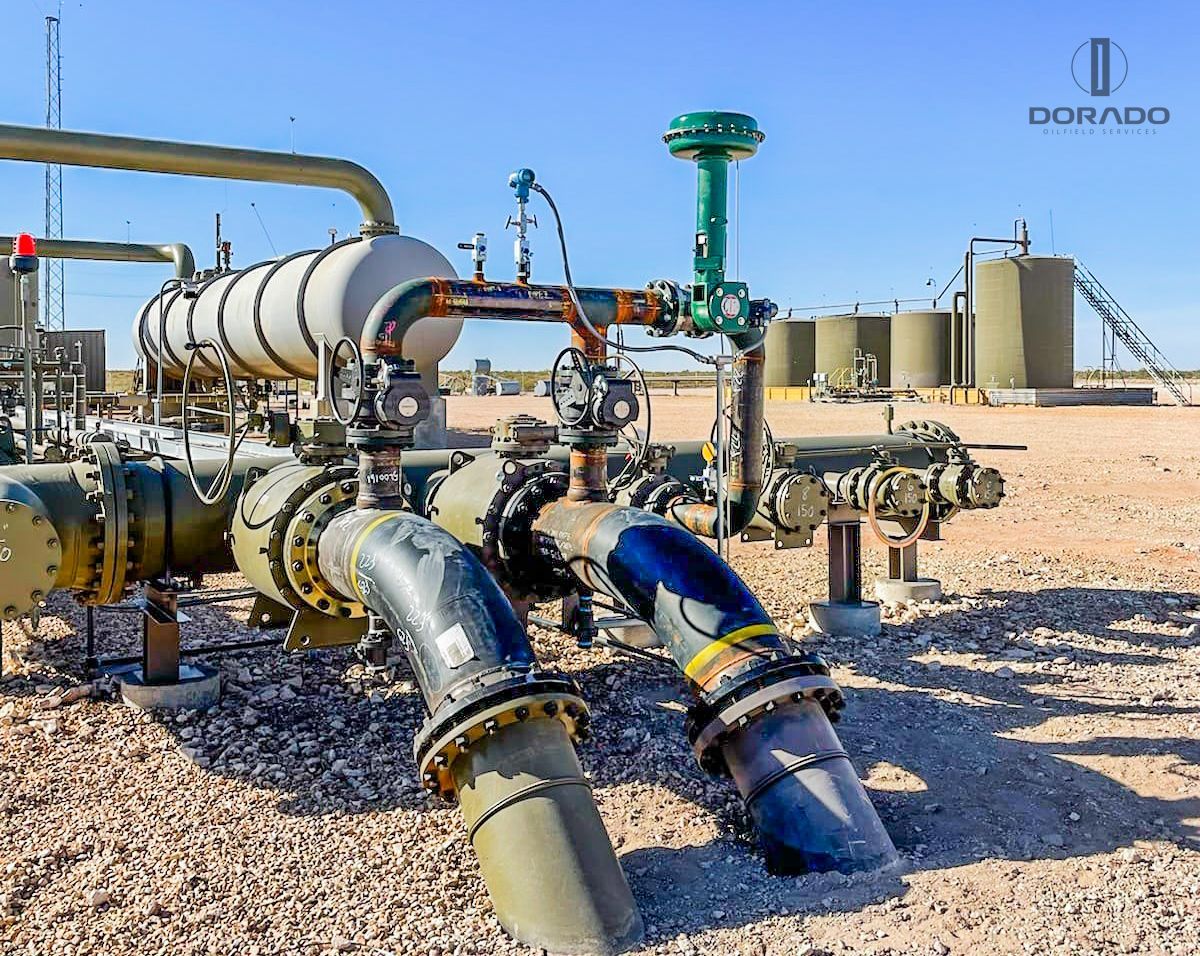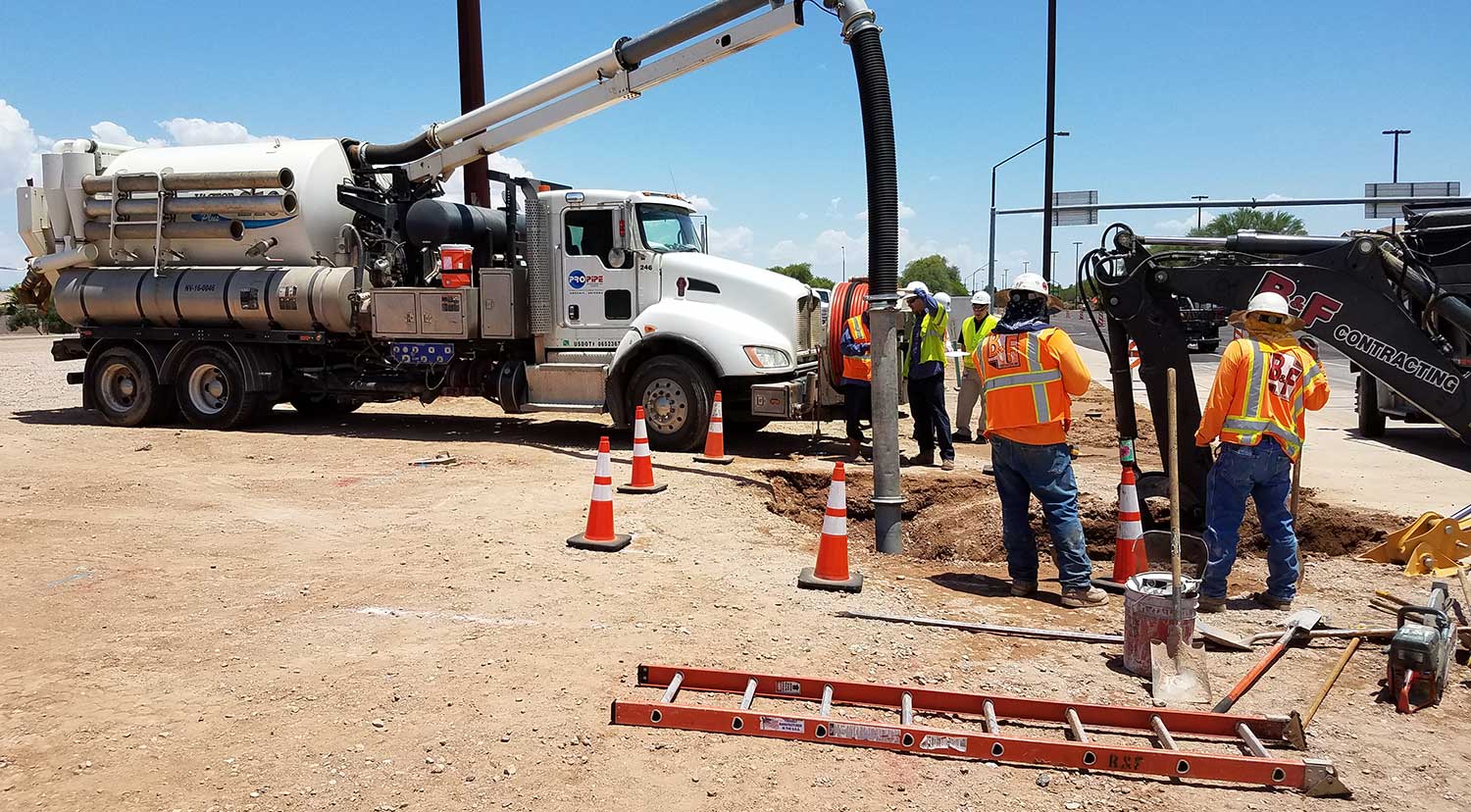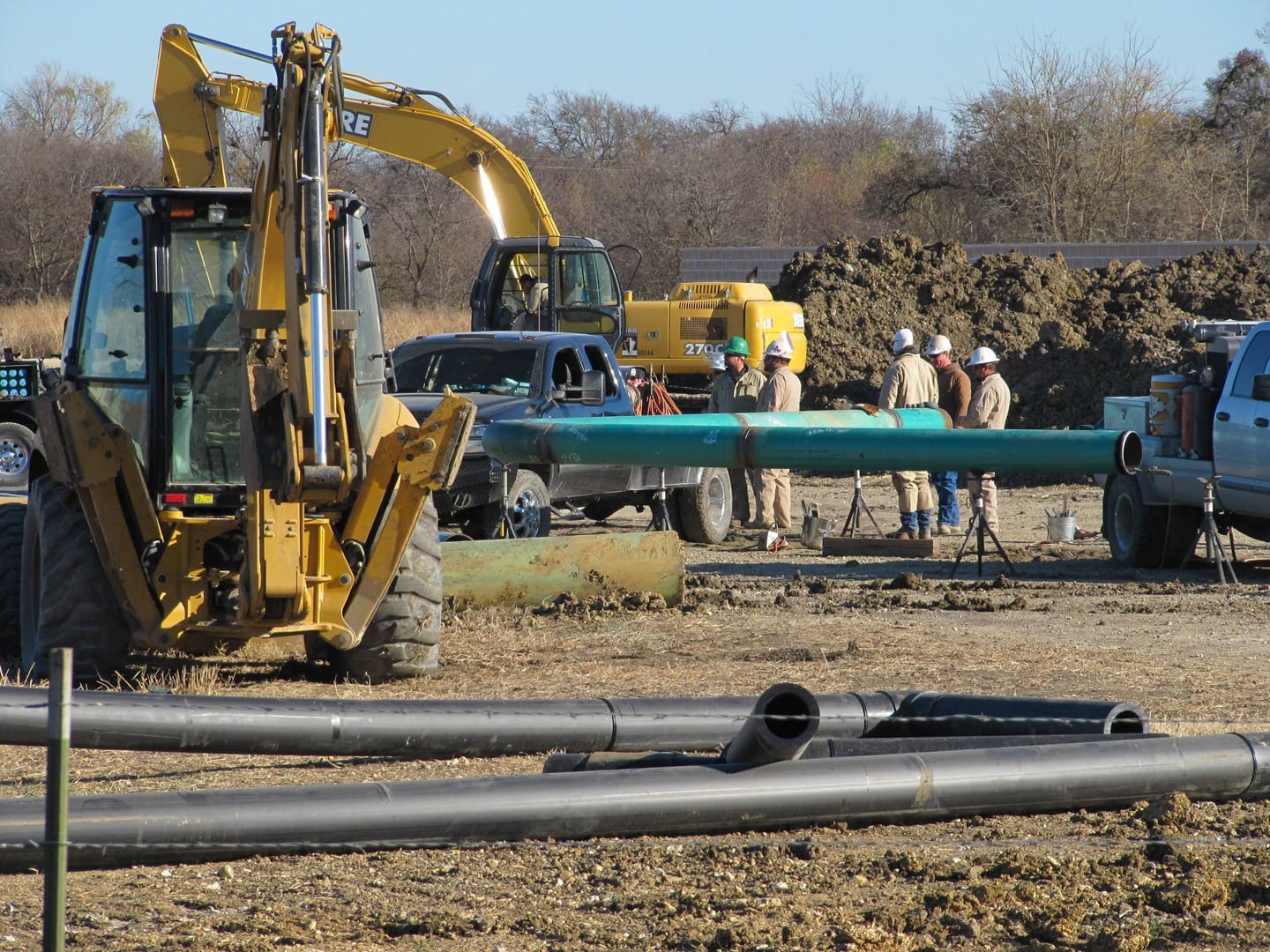Discovering the current Innovations in Pipeline Construction Providers for Modern Projects
The Pipeline Construction sector is undergoing substantial adjustments. Advancements such as smart materials and robotics are improving standard practices. These improvements guarantee to boost performance and safety. Additionally, AI modern technologies are enhancing project management capabilities. As these elements converge, they raise inquiries regarding their long-term influence on sustainability and cost. Recognizing these developments is crucial for stakeholders looking to browse this advancing landscape. What effects do they hold for future tasks?
The Rise of Smart Materials in Pipeline Construction
As the demand for a lot more reliable and lasting Pipeline systems raises, the combination of smart products has become a transformative option in Pipeline Construction. These innovative materials have unique residential properties that enhance the efficiency and long life of pipelines. As an example, self-healing polymers can instantly fix minor leaks, substantially minimizing upkeep prices and downtime. Furthermore, materials installed with sensing units can monitor architectural stability and environmental problems, permitting real-time data collection and analysis.
In addition, smart materials are commonly light-weight and corrosion-resistant, which not only streamlines installment yet additionally extends the life-span of the systems. Their flexibility makes it possible for pipes to stand up to extreme ecological problems, advertising safety and security and reliability. As markets significantly focus on sustainability, the usage of green clever products adds to decreased ecological influence. Overall, the surge of smart products marks a notable change in Pipeline Construction, leading the way for ingenious services to fulfill modern framework requirements.
Advancements in Robotics for Installation and Upkeep
The combination of wise materials in Pipeline Construction is matched by improvements in robotics, which are revolutionizing installation and upkeep procedures. Robotic modern technologies, such as automated welding systems and drones, boost performance and accuracy, reducing human error and lessening safety and security dangers. These robotics can operate in difficult atmospheres, making sure that installations are conducted in remote or unsafe locations without putting employees in danger.
Robotic examination tools furnished with innovative sensors give real-time data on Pipeline stability, permitting for positive upkeep. They can discover leakages or structural weak points, enabling prompt treatments that expand the life expectancy of Pipeline systems. Using robotics not just accelerates the Construction timeline yet also maximizes resource appropriation, causing cost financial savings. As these innovations remain to progress, they are readied to play a critical function in forming the future of Pipeline Construction, making certain integrity and sustainability in infrastructure development.
AI-Driven Job Monitoring Devices Transforming Process
AI-driven project monitoring tools are improving workflows in Pipeline Construction by improving decision-making processes through enhanced access to real-time information analytics. These devices allow teams to react swiftly to job growths, thus boosting effectiveness. Structured communication channels foster collaboration amongst stakeholders, better optimizing project end results.
Improved Decision-Making Procedures

Real-Time Information Analytics
Using real-time information analytics, modern-day task management tools reinvent operations in Pipeline Construction. These advanced tools utilize synthetic intelligence to give instant insights right into job performance, resource allowance, and prospective risks. By continually keeping an eye on key efficiency indicators, groups can swiftly adapt to transforming conditions, optimizing labor and products use. The assimilation of real-time information permits for more educated decision-making, reducing hold-ups and decreasing expenses. In enhancement, anticipating analytics can identify patterns and projection difficulties prior to they intensify, boosting total task performance. Therefore, Pipeline Construction business that embrace these AI-driven tools can improve task timelines and results, guaranteeing they continue to be affordable in an increasingly complex industry landscape. This development notes a considerable change towards data-centric monitoring practices.
Streamlined Interaction Channels
Efficient communication is vital in Pipeline Construction, where countless stakeholders must collaborate seamlessly to assure task success. The introduction of AI-driven project monitoring tools has actually changed communication channels within the industry. These devices facilitate real-time details sharing, allowing groups to access updates, share records, and track development effectively. By automating routine jobs and providing a central platform for interaction, these innovations get rid of misconceptions and reduce delays. Boosted visibility into job timelines and resource allocation promotes accountability amongst team members. Furthermore, AI analytics can recognize potential communication gaps, making certain aggressive problem-solving. Eventually, streamlined communication channels not just improve process however also elevate total job performance, enabling Pipeline Construction companies to fulfill modern-day demands effectively.
Enhanced Security Protocols Via Modern Technology Combination
The integration of technology in Pipeline Construction has actually brought about boosted security methods. Real-time tracking systems, wearable security gadgets, and automated risk assessments are now necessary elements in reducing dangers on job websites. These advancements not only improve employee safety but likewise enhance conformity with industry regulations.
Real-Time Surveillance Systems
How can real-time tracking systems change Pipeline Construction safety methods? By incorporating innovative innovation, these systems offer continuous monitoring of Construction tasks, making sure instant detection of potential risks. Sensing units and electronic cameras can check ecological problems, devices efficiency, and workforce activities, delivering crucial information in genuine time. This positive approach enables project managers to identify dangers before they escalate, considerably improving precaution on-site. Furthermore, real-time tracking promotes conformity with governing demands, ensuring that safety criteria are met consistently. The capacity to analyze data immediately sustains educated decision-making, making it possible for prompt interventions. Because of this, Pipeline Construction tasks can operate more efficiently while protecting the wellness of employees and reducing mishaps, consequently transforming the market's safety landscape.
Wearable Security Tools
Frequently, wearable safety and security gadgets are being integrated right into Pipeline Construction to boost safety and security procedures. These cutting-edge devices, consisting of clever helmets, vests, and wristbands, are designed to monitor employee wellness and environmental conditions in real-time. Equipped content with sensing units, these devices can detect dangers such as harmful gas exposure, excessive warmth, or high noise degrees, offering instant alerts to workers and supervisors. In addition, wearable innovation usually includes general practitioner tracking features, permitting for reliable location monitoring of workers on-site. This ability not only aids in quick reaction throughout emergency situations yet also boosts total task management. By focusing on employee safety with innovation assimilation, Pipeline Construction companies are making substantial strides in reducing mishaps and advertising a society of safety and security within the market.

Automated Danger Evaluations
While conventional threat evaluations frequently rely upon manual examinations, the integration of automated risk evaluation technologies is transforming safety and security methods in Pipeline Construction. These sophisticated systems leverage information analytics, artificial intelligence, and artificial intelligence to recognize potential threats much more precisely and successfully. By constantly monitoring ecological conditions, tools condition, and worker behavior, automated evaluations supply real-time insights that enhance decision-making. This aggressive strategy reduces the possibility of accidents and enhances compliance with safety regulations. Additionally, automated danger assessments can be upgraded quickly, making sure that all stakeholders have access to the current details. As a result, Pipeline Construction jobs take advantage of a much safer workplace, minimizing disruptions and fostering a culture of safety and security with modern technology assimilation.
Lasting Practices in Pipeline Construction
As the need for power framework climbs, the Pipeline Construction market increasingly prioritizes lasting practices that minimize ecological influence. Companies are embracing environmentally friendly materials and innovative Construction methods to reduce their carbon footprint. The usage of trenchless modern technology enables for Pipeline setup with minimal interruption to the surrounding atmosphere, maintaining all-natural environments and reducing dirt disintegration.
Maintaining Additionally, the application of renewable resource sources, such as solar or wind, to power Construction activities is getting grip. This shift not only decreases reliance on fossil fuels yet also improves the general sustainability of Pipeline jobs. Additionally, efficient waste administration practices, including recycling and recycling materials, are ending up being requirement in the market.
Real-Time Surveillance and Predictive Maintenance Solutions
The change in the direction of lasting techniques in Pipeline Construction has led the way for the integration of real-time monitoring and anticipating upkeep remedies. These innovations leverage advanced data and sensors analytics to continually assess Pipeline stability and functional effectiveness. By gathering data in real time, operators can find abnormalities such as leakages or stress drops before they intensify into severe issues. This proactive strategy not only minimizes ecological dangers however likewise minimizes downtime and maintenance costs.
Predictive maintenance uses algorithms to forecast potential failures based on historical data and existing performance metrics. This enables prompt treatments, optimizing maintenance routines and source allowance. Overall, real-time tracking and anticipating upkeep remedies represent a considerable innovation in Pipeline Construction, boosting security and dependability while sustaining sustainability objectives. As markets proceed to welcome these advancements, the functional landscape of Pipeline monitoring is set to advance dramatically, making certain long-term practicality and effectiveness.
The Function of Drones in Surveying and Examination
Drones have become transformative devices in the evaluating and evaluation of pipelines, using enhanced performance and accuracy. Their ability to catch high-resolution pictures and video clips from numerous angles permits comprehensive assessments of Pipeline integrity without risking human safety. Geared up with advanced sensors and thermal imaging capacities, drones can identify leakages, rust, and architectural anomalies that may not show up to the naked eye.
Furthermore, the release of drones significantly minimizes assessment time, making it possible for quicker decision-making for repair and maintenance. This effectiveness converts to set you back savings and marginal disruption to bordering settings. Drones can additionally access hard-to-reach areas, such as sturdy surfaces or raised structures, further expanding the scope of inspections.
As the Pipeline industry proceeds to embrace technical innovations, the combination of drones right into evaluating and examination processes is anticipated to expand, setting brand-new requirements for functional quality and safety and security in Pipeline Construction services.
Often Asked Inquiries
What Are the Expenses Connected With Modern Pipeline Construction Innovations?
The expenses connected with modern see post Pipeline Construction technologies usually consist of sophisticated materials, specialized labor, and cutting-edge modern technology. These aspects add to greater preliminary financial investment, however can lead to lasting savings through boosted performance and minimized upkeep demands.
Just How Do Regulative Modifications Effect Pipeline Construction Technologies?
Regulatory changes considerably affect Pipeline Construction technologies by necessitating the adoption of much safer, extra reliable approaches. Conformity demands usually drive advancement, causing improvements in materials, style, and Construction methods that enhance general job sustainability and security.
What Skills Are Required for Occupations in Advanced Pipeline Construction?

Occupations in advanced Pipeline Construction need knowledge in engineering principles, job management, safety and security procedures, and environmental policies. Additionally, abilities in technology combination, teamwork, and analytical are necessary for going across the complexities of contemporary framework jobs.
Just How Can Firms Ensure Compliance With Environmental Specifications?
To assure conformity with ecological criteria, companies should apply extensive training programs, perform regular audits, and take on finest practices in sustainability. Involving with stakeholders and keeping track of governing changes further enhances their dedication to environmental stewardship.

What Are the Secret Difficulties Encountering Pipeline Construction Today?
The essential difficulties dealing with Pipeline Construction today include governing compliance, ecological issues, changing material expenses, labor shortages, and the need for sophisticated technology integration (Pipeline Construction Services). These aspects make complex job timelines and general performance in the sector
As the need for extra effective and lasting Pipeline systems raises, the assimilation of clever products has actually emerged as a transformative service in Pipeline Construction. AI-driven project administration tools are improving operations in Pipeline Construction by improving decision-making procedures via better accessibility to real-time data analytics. While job management in Read Full Article Pipeline Construction has actually generally counted on hand-operated procedures, the combination of sophisticated devices considerably enhances decision-making abilities. Utilizing real-time information analytics, contemporary task administration devices reinvent operations in Pipeline Construction. Professions in sophisticated Pipeline Construction require knowledge in design principles, task monitoring, safety and security protocols, and environmental laws.